Are you researching how to plan a retreat to gain rewarding skills and connect in person with your audience? As a retreat leader and facilitator, I know hosting a retreat is a rewarding and often life-changing experience.
Planning a retreat takes care, creativity, and a lot of detailed planning—which can feel daunting.
In this article, we take a deep dive into how to plan a retreat, looking at the key planning stages from creating your vision, booking a venue, activity selection, creating a schedule, and more. We also provide our ultimate retreat planning checklist and expert tips from a retreat host.
We also take a step-by-step look at how Checkout Page makes it easy to take registrations, deposit payments, and payment plans for your retreat—at a low cost with no fees.

What is a retreat?
A retreat offers an opportunity for time out from our fast-paced lives, to withdraw from everyday surroundings, tasks, and responsibilities, and to spend time in a tranquil location in a group setting.
Curated around an area of focus—such as yoga, meditation, couples retreats, or spiritual development—retreats allow people to move at a slower pace, focus on meaning, and wave goodbye to daily distractions.
Many companies also choose to give their employees the opportunity to step away from their routines and go on a company retreat involving team-building activities, training sessions, and time to connect with colleagues away from the daily demands of their jobs.

Why plan a retreat?
Planning a retreat can benefit your personal development, fulfillment, and reputation as a teacher, creator, or person with knowledge and a passion for a creative or spiritual modality. Benefits of hosting a retreat include:
- Deepening relationships: Hosting a retreat enables you to build stronger connections with participants than is possible online, and it provides a space for those with a deep interest in your work and offerings to get to know you and others with the same passions.
- Creating impact: Focusing on a specific cause or purpose can allow you to create a profoundly positive impact in people's lives and contribute to meaningful, reciprocal relationships in the community where you are hosting the retreat if planned with consideration.
- Generating income: Hosting retreats can be a good source of revenue if you plan, budget, and price effectively.
- Building credibility: Hosting successful retreats can enhance your reputation within a community. It is a beautiful way of establishing word-of-mouth praise when satisfied participants share their experiences online and with friends.
- Developing knowledge & skills: Sharing knowledge in a group setting rewards us with shared reflections and feedback, helping us deepen our understanding and grasp of the subject matter.
- Creating new connections: Retreats bring together participants from diverse backgrounds, offering opportunities for new friendships and connections to develop and for collaborations with people you respect whose passions and skill sets would complement your retreat.
- Personal growth: Organizing a retreat is usually an enriching experience for the host, creating opportunities for leadership development and facilitation skill-building and growing your capacity for empathy and care.
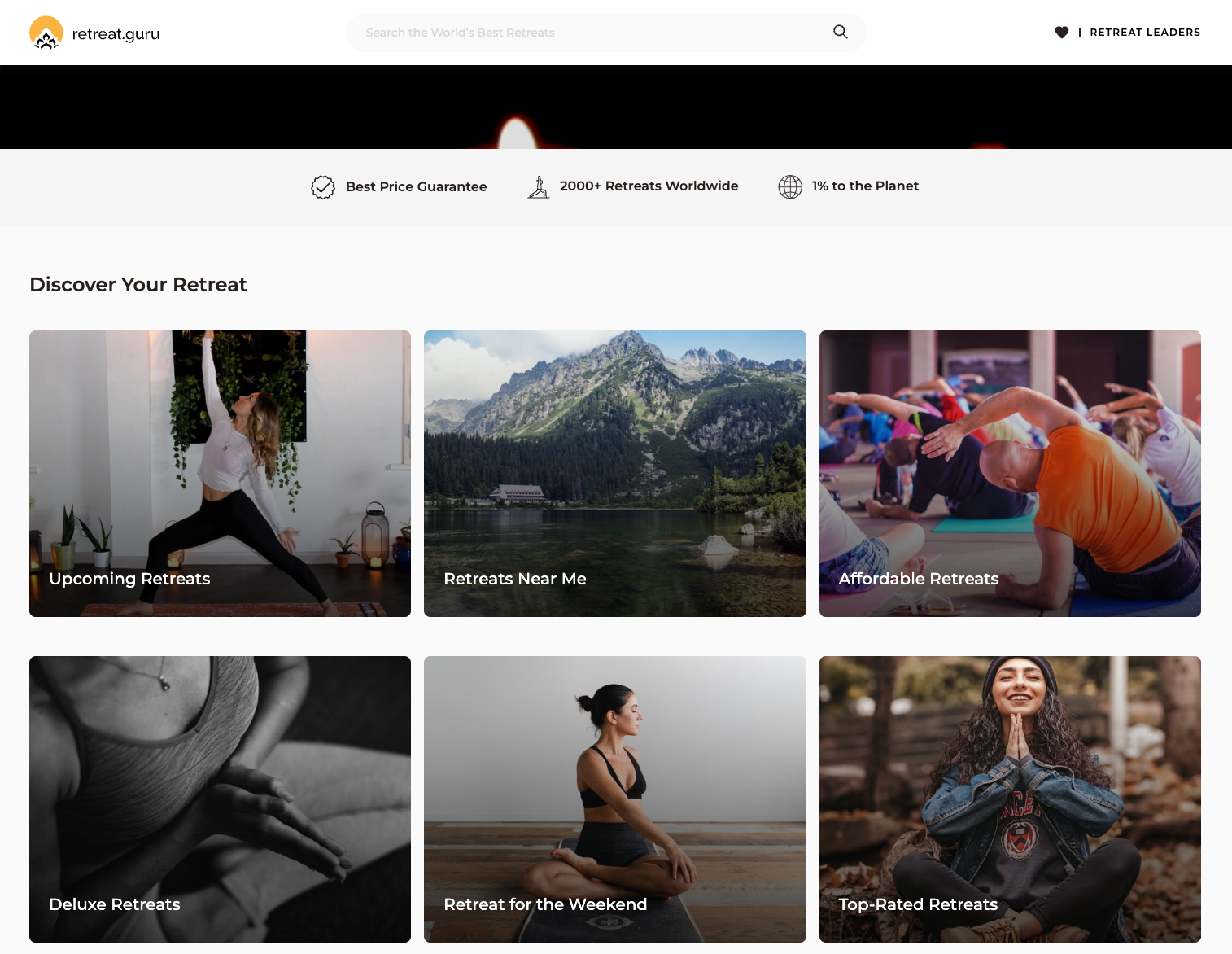
How to start planning a retreat
There are many things to consider during different stages of the retreat planning process, from the inception of your idea to the post-retreat feedback form.
Let's take a look at 15 key retreat planning stages:
#1 Have a clear vision, purpose, and theme
A successful retreat requires a clear vision, purpose, and well-defined objectives.
A memorable retreat goes beyond a picturesque location; it needs a strong sense of purpose and intention throughout the program to ensure a meaningful impact.
Clarify the reasons for bringing people together. What do you want to share with them, and what do you hope they will gain from this experience?

#2 Identify a target audience
Understanding your target audience is essential for designing a retreat that resonates with participants and meets their needs. Consider the following strategies to help you define and pinpoint your ideal attendees:
- Define your niche: Determine the specific focus of your retreat. Are you catering to beginners who are exploring their interests, or are you targeting individuals with more advanced knowledge seeking to deepen their skills?
- Consider your demographic: Identify the demographics of your ideal audience. Consider factors such as age, gender, location, and socioeconomic status. Tailor your messaging and offerings to address the needs and preferences of your attendees.
- Psychographics: Study the psychographics of your potential audience. What are their values, interests, lifestyles, and pain points? By understanding their motivations and aspirations, you can design a retreat that genuinely appeals to them.
- Conduct market research: Use surveys, interviews, or focus groups to gather insights directly from potential attendees. This feedback can help you gauge interest in specific topics, activities, and formats, ensuring that your retreat aligns with what your audience truly desires.
- Join online communities: Engage with online forums, social media groups, and communities related to your retreat’s theme. Pay attention to the discussions and questions being raised, which can provide valuable insights into the interests and challenges of your target audience.
- Consider diversity: Determine whether you want a specific target audience or a diverse mix of participants. Inclusivity can enrich the retreat experience, providing different perspectives and fostering a supportive community among attendees.
By carefully considering these factors, you'll be able to identify and connect with a target audience that is genuinely interested in your retreat, increasing the likelihood of a successful event.
#3 Set a budget and create a pricing strategy
Creating a well-defined budget and pricing strategy is key to successful retreat planning. Here are key steps to consider:
- Identify all expenses: Start by listing all potential costs associated with the retreat. This includes venue rental, catering, accommodations, marketing, transportation, supplies, and any speaker or facilitator fees. Be thorough to avoid any hidden costs.
- Estimate revenue: Determine how much revenue you anticipate generating from ticket sales and any additional income sources, such as merchandise or sponsorships. This will help you gauge whether your budget aligns with your goals.
- Set pricing: Establish a pricing structure that reflects the value of your offerings. Consider tiered pricing options to cater to different budgets, such as early bird rates, group discounts, or premium packages with added benefits.
- Ensure transparency: Be transparent about your pricing. Clearly outline what participants will receive for their investment to build trust and confidence in your offerings.
- Payment options: Offer multiple payment options to make it easier for attendees to register. Use a reliable commerce platform that accommodates various payment methods, including credit cards, PayPal, and Venmo.
- Budget flexibility: Allocate a portion of your budget for unexpected expenses or contingencies. This will provide a buffer and help you adapt if circumstances change.
- Evaluate and adjust: After the retreat, review your budget versus actual expenses to learn from the experience. This evaluation will inform your future planning and pricing strategies.
Tip: Learn more about ticket pricing strategies by reading 5 proven tactics to increase event ticket sales and sell out your next event

#4 Select a location and accommodation
Choose options that align with the retreat's vision, target audience, and theme. Look for essential features such as yoga spaces and eco-friendly properties. The most important factors to consider are:
- Host abroad vs. closer to home:
- Pros of hosting overseas: Often includes lower overhead costs, breathtaking scenery, and favorable weather.
- Cons: Additional travel arrangements and expenses can complicate logistics and raise costs.
- Consider dedicated retreat centers:
- These facilities simplify organization by managing on-site transportation, dietary requirements, and necessary equipment. They often handle specific dietary restrictions as well.
- Keep in mind that this convenience typically comes with higher costs.
- Use a booking platform: Platforms like Airbnb or dedicated retreat reservation software can help find suitable properties globally. You can also look for vacation home rentals that meet your needs.
- Check facilities and equipment: Confirm the availability of necessary items, such as yoga mats. If not provided, ensure there’s a reliable source for renting equipment locally.
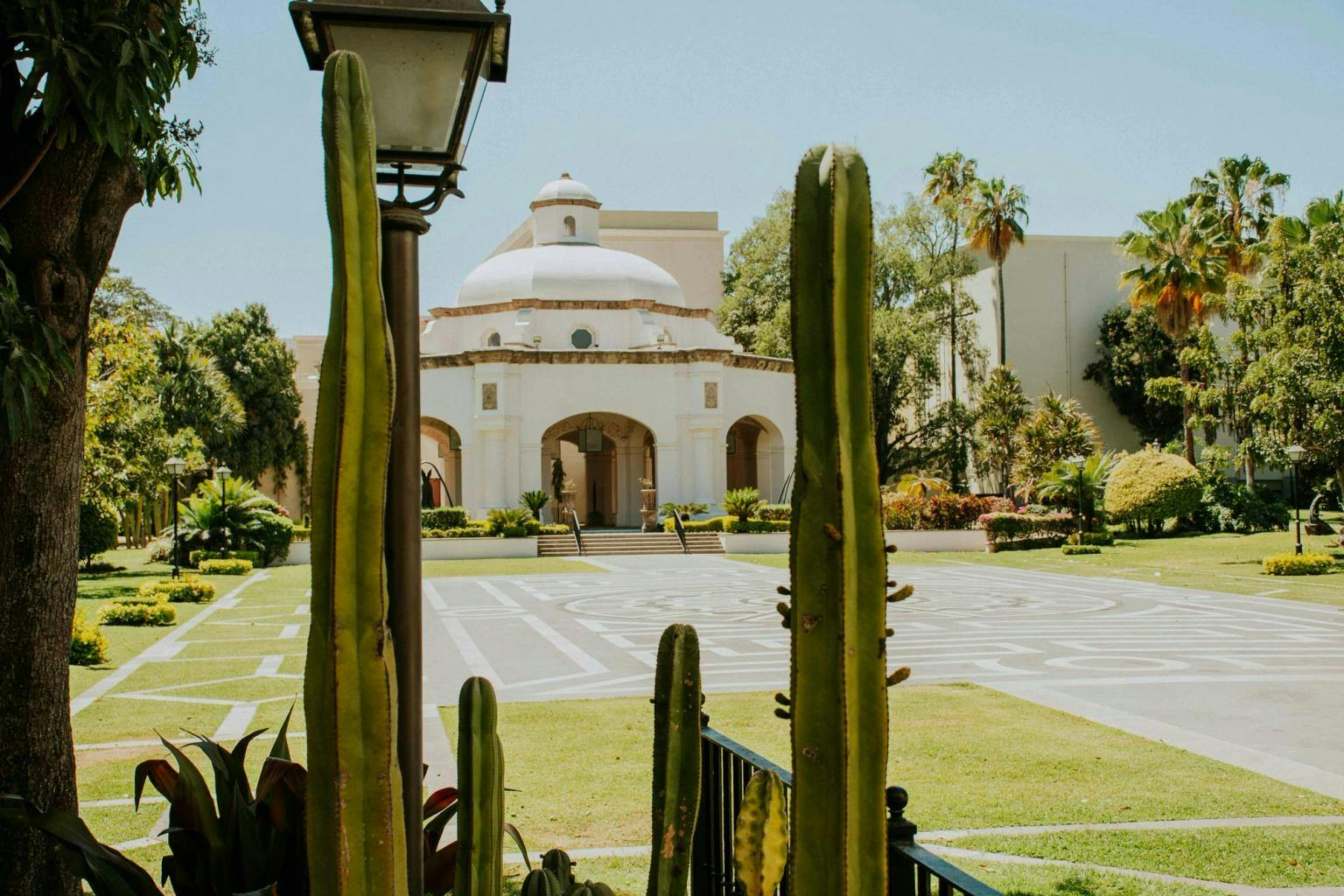
#5 Cater to dietary requirements and food preferences
Food is a vital part of any retreat, both in terms of keeping guests nourished with healthy food and as a shared time for guests to relax, connect, and reflect on the experiences they are having.
Like many other elements of retreat planning, food choices vary widely in budget and quality. For medium to high-budget retreats, hiring a chef who can create well-presented, unique, and healthy dishes is advisable.
For people setting out, employing a friend with excellent culinary skills or catering themselves is a common choice.
Simple food such as soups, stews, and salads can work well. Ascertaining dietary requirements is crucial — there can be a broad range of needs, such as vegan, gluten-free, low-carb, and more.
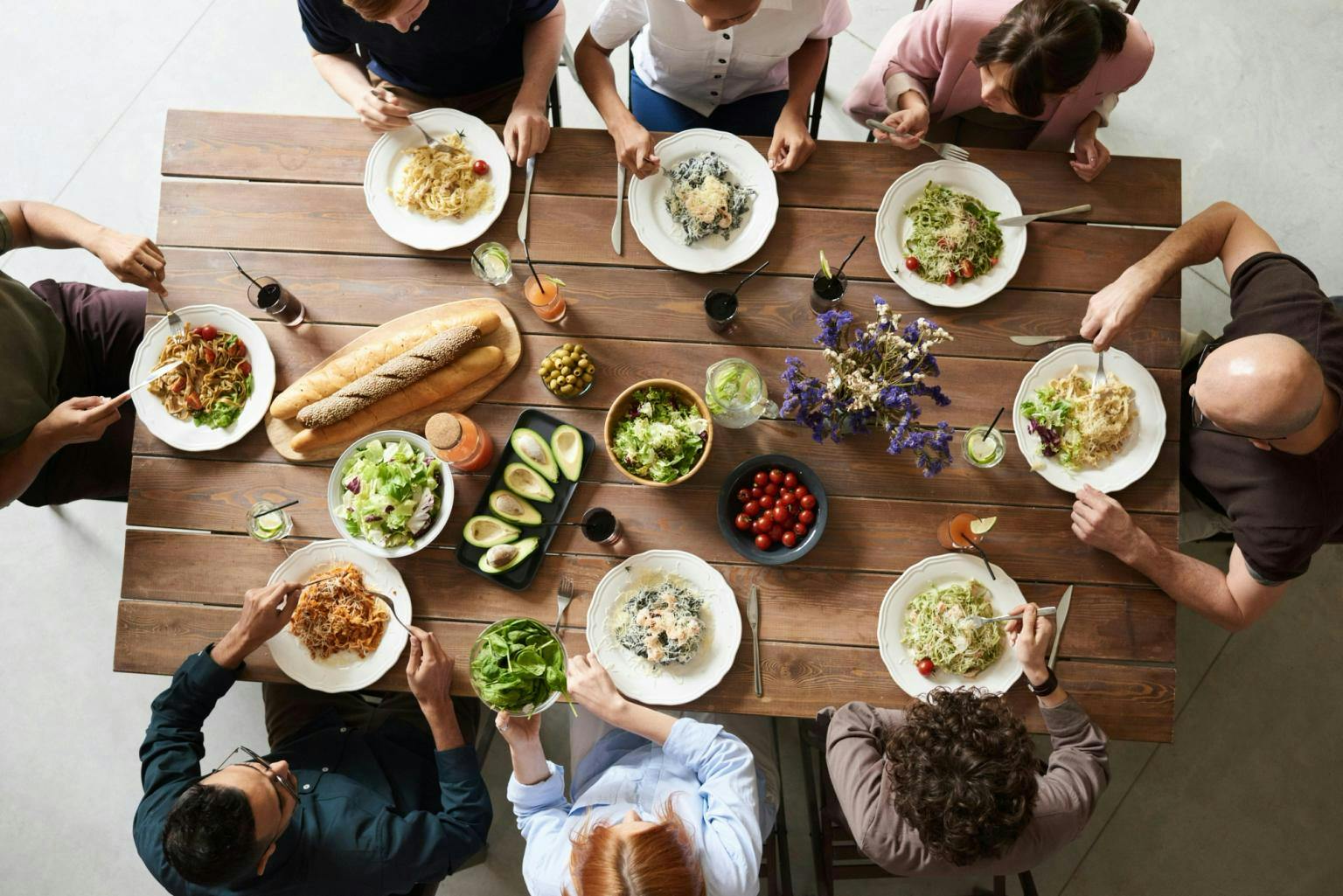
#6 Plan the retreat itinerary and activities
Creating a well-balanced retreat itinerary is crucial for fostering an engaging and transformative experience for participants. Here are some key considerations to help you design an effective schedule:
- Create a balanced flow: Aim for a harmonious mix of structured activities and relaxation time. This balance will support both personal connection and individual reflection. Incorporate a variety of sessions, such as workshops, discussions, and group activities, interspersed with downtime for participants to recharge and process their experiences.
- Diverse activity types: Include a range of activities that cater to different interests and learning styles. Consider integrating movement-based sessions like yoga or hiking, as well as creative outlets such as art or writing workshops. This diversification will enhance the overall experience and keep participants engaged.
- Optional activities: Recognize that individuals have varying preferences for pace and engagement. By offering optional activities, you empower attendees to tailor their experience to their own needs. Those who prefer a more relaxed pace can choose to rest, meditate, or enjoy quiet time, while others can dive into additional offerings.
- Thematic cohesion: Ensure that your activities align with the overall theme and goals of the retreat. Each session should contribute to the overarching message or experience you wish to convey. This cohesion will enhance the meaningfulness of the retreat and create a more impactful journey for participants.
- Community building: Include activities that encourage interaction and connection among attendees. Group discussions, team-building exercises, and shared meals can create a sense of community and foster lasting relationships. Encourage participants to share their stories and insights, enriching the collective experience.
- Flexible timing: Build flexibility within your schedule to accommodate different energy levels and spontaneous opportunities for connection. While it’s essential to have a plan, allowing room for adjustments can lead to organic moments of discovery and engagement.
By thoughtfully crafting your retreat itinerary and activities, you can create an environment that nurtures meaningful connections and leaves a lasting impact on attendees.

#7 Gather a facilitation team
The facilitation team makes the retreat, and choosing a great team is vital to your success.
The ability to guide a group through a multi-day experience, sometimes with complex dynamics arising, takes a special kind of cooperation and awareness, so you must feel comfortable, connected, and trust the team.
Ensure that your team consists of people who have run retreats or full-day events before — especially if you have not. They will have invaluable advice on the schedule and keeping a group engaged.

#8 Retreat marketing and promotion
Consider hiring a professional to develop your retreat marketing strategy if you have the budget. If you're working with a smaller budget, here are some practical, effective ways to promote your event:
- Use social media platforms to engage your audience.
- Explore collaborations with like-minded organizations.
- Establish influencer partnerships to broaden your reach.
- Attend relevant in-person events like festivals and workshops to connect with potential attendees.
- Utilize email marketing to reach out to interested participants.
- Join online communities and networks, such as Facebook and Telegram groups, to promote your event.
Additionally, consider utilizing flyers and posters at similar events and exploring opportunities to speak on podcasts or participate in live Instagram sessions.

#9 Retreat booking process
Implement a straightforward booking process tailored to the retreat scale, using simple Google forms and spreadsheets for small retreats, or consider a dedicated booking platform such as Retreat Guru once you regularly host larger retreats.
Checkout Page enables you to register guests and take payments for your retreat from a standalone page, which you can link to from your social media bio, posts, stories, website, or newsletters.
Using a payment plan option, you can take a deposit from guests, followed by phased payments to make it as accessible as possible for potential attendees!
#10 Legal and insurance considerations
Securing retreat insurance is essential to protect against potential liabilities and unforeseen events. This type of insurance typically covers cancellations, accidents, and property damage, ensuring that the organizer and participants are safeguarded.
Reviewing policy details to understand what is covered and any limitations that may apply is crucial.
In addition to insurance, proper legal documentation is vital. This includes waivers and consent forms that participants must sign, acknowledging risks associated with the retreat activities.
Ensure all contracts with venues, vendors, and facilitators outline responsibilities, payment terms, and cancellation policies to avoid misunderstandings.
#11 Communication with guests
Most retreat hosts will follow up an application with a 121 call to talk to the prospective guests and determine whether the retreat is a good fit for them. A call allows both parties to get to know each other better and determine if the retreat will be right.
Keep guests who book informed and engaged through clear and timely communication. Provide logistical information such as transport options, payments, and what to pack through prompts for emotional and creative preparation such as pre-retreat journaling activities.
Foster a sense of connection before the retreat by creating a WhatsApp or Telegram group chat. Encourage guests to introduce themselves and share their reasons for attending, helping them connect in advance.
#13 Plan a team itinerary review
Walkthrough the retreat itinerary as a team in the days before the retreat to ensure everyone is on the same page and that no details have been overlooked.
Imagine yourself as a guest moving through your scheduled program and see how it feels in terms of pacing and the amount of structured vs unstructured time.
Ensure the team has a separate schedule with detailed notes about each activity's requirements and logistics behind the scenes.
#14 Be mindful and attentive during the retreat
During the retreat, focus on being present, coordinating team duties efficiently, and engaging with guests while maintaining a structured yet relaxed atmosphere.
Being present and not rushing is critical to a memorable, connected experience.
Most importantly, enjoy and appreciate the retreat with your guests because it will be much more memorable for all involved if you share the meaningful experience rather than simply 'deliver' the scheduled activities.

#15 Conduct post-retreat feedback and evaluation
After the retreat, collaborate with your facilitation team to reflect on the event and gather customer insights using evaluation or feedback forms. This feedback is crucial for enhancing the participant experience in future retreats.
Celebrate successes and identify areas for improvement. While feeling exhausted post-retreat is common, capturing immediate details can provide valuable insights.
Finally, send retreat follow-up emails to happy participants, asking for reviews or encouraging them to create impactful video testimonials to highlight your subject expertise.
The ultimate free retreat planning checklist
Embarking on retreat planning can seem overwhelming, with many details to consider. That's where our ultimate retreat planning checklist comes in!
We’ve created a comprehensive guide on planning a retreat that will simplify the process and give you peace of mind that you have all the critical aspects in sight.
Stay organized and ensure nothing essential gets missed as you plan a memorable and successful retreat by using our retreat planning checklist template to guide you through each stage of the process.
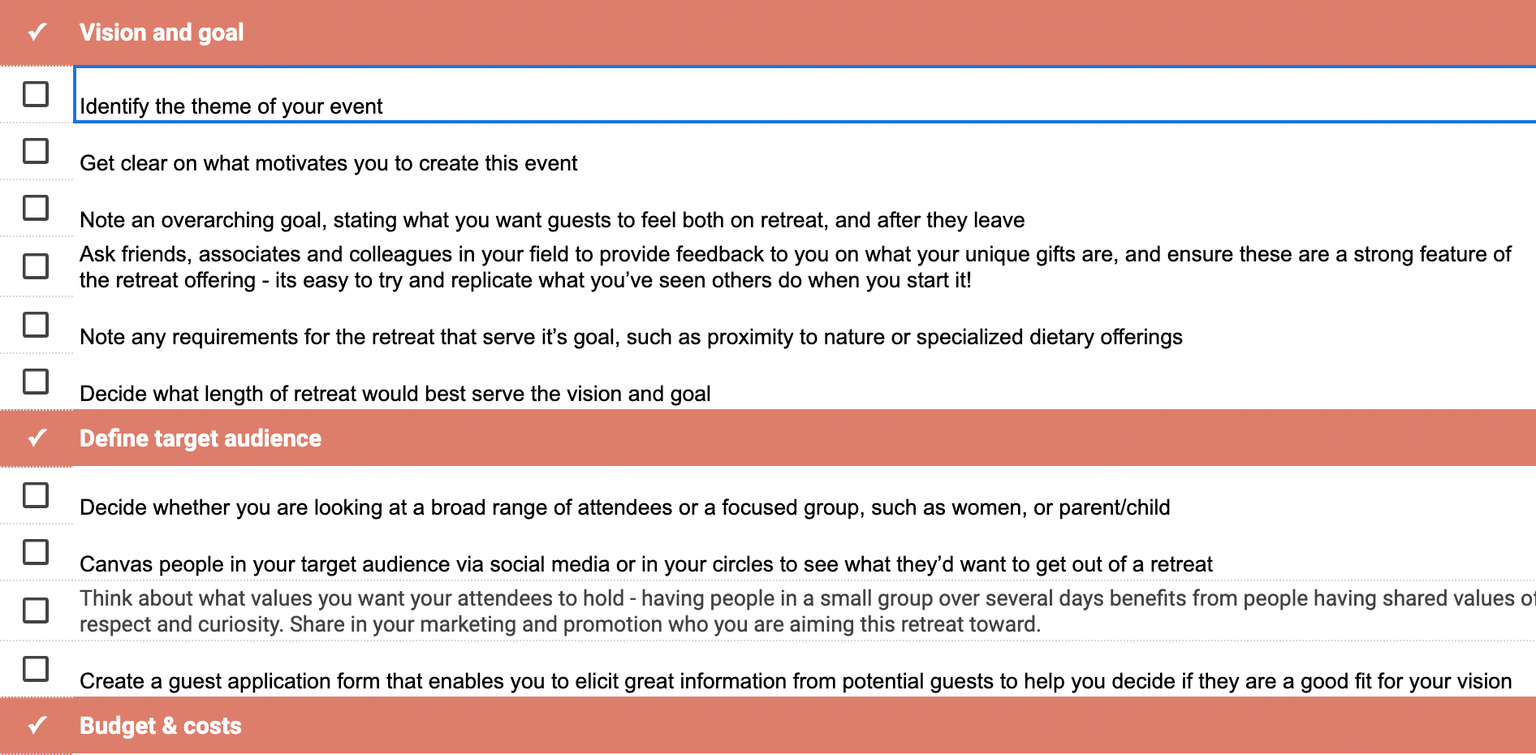
Expert tips from a retreat host
Over my years of working at health, well-being, spiritual, and nature-based retreats, I have noticed simple yet powerful considerations that can take a retreat from good to magical and even life-changing.
I will share some key lessons I have learned that will help you plan a retreat that's transformative for guests and for you.
1. Welcome your guests properly
I cannot stress enough how important it is to receive guests with enthusiasm and warmth when they arrive. Take the time to make them feel at home, show them around the venue, and let them know what’s on the schedule for that day.
Even some of the most well-established retreats I have attended have not done this well— leading to guests feeling confused, disorientated, and unwelcome.
Their ability to be vulnerable and engage deeply with the experience hinges on them feeling a sense of trust in you.

2. Don't overfill your itinerary
A common mistake when you first set out with retreat planning is overfilling the schedule. It’s natural to want to offer people a rich experience — but there’s truth to the phrase ‘less is more’!
A back-to-back schedule can leave people exhausted and disengaged. If workshops are well held and lead to deep engagement, people will appreciate quiet time to reflect, integrate, and connect with other guests.
There will always be differences in guest energy levels, so adding some optional activities — such as group journaling with prompts or a guided walk — can help keep those with more energy busy while others can take quiet time.

3. Host a group introduction call before the retreat
When we introduced a group Zoom call for all the retreat attendees about ten days out from the retreat, we saw a significant difference in how comfortable and happy guests were on arrival.
During this call, everyone shared their reasons for coming, what they were excited about, and what they were nervous about. It meant that people felt acquainted before arriving, leading to much more relaxed guests on day one!

4. Subject expertise vs facilitation skills
Facilitating group activities and holding an adaptable container for guests throughout the retreat is a skill on its own. Knowing a particular modality well isn’t always enough to create a retreat where people will feel immersed.
When planning a retreat, it’s important to be realistic about your skills and experience and bring in an experienced facilitator to work alongside you.
5. Invite someone to work exchange
Running a retreat takes a lot of energy. It is not just the physical activity but the emotional load. It can be tempting to keep the number of staff low to keep to a budget, but the impact of being depleted as a leader can be huge — the guests will feel it in such an intimate setting.
Offering someone with the right skills the chance to come to retreat for free in exchange for doing some work to support the team and maybe teach a class is a great way to take some weight off your shoulders.
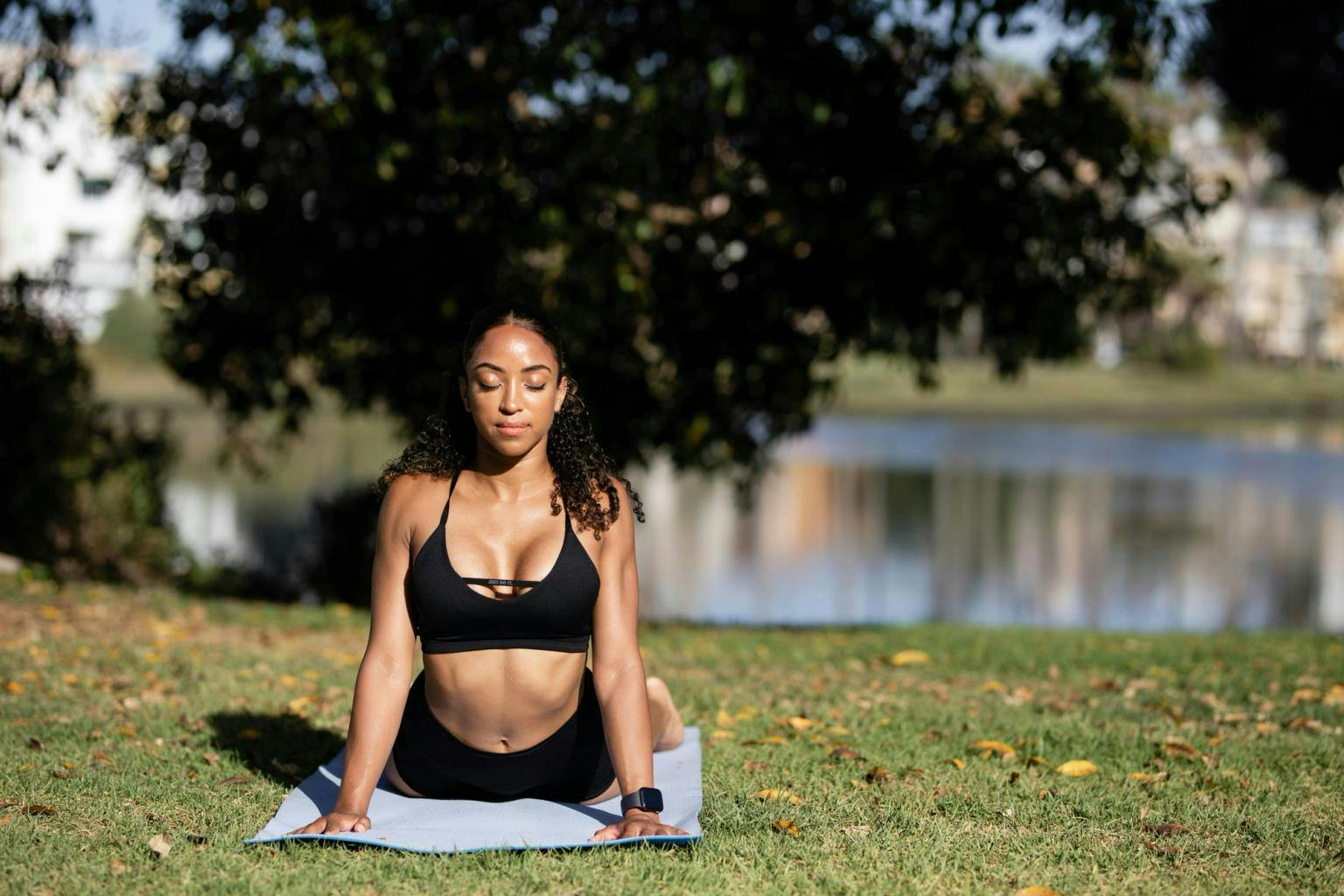
6. The power of the group
One of the greatest lessons of my years of supporting and leading retreats is that the group’s interconnection brings much of the magic and transformation.
Beneath all the structured moments on retreat, people will learn from and share — often in profound ways.
A good facilitator leans into this power and creates time for sharing each day and space for guests to spend time together in a relaxed context, such as crafting or a nature walk.

How to sell a retreat with Checkout Page
With its flexible and customizable payment options, including the ‘Payment plan’ option, the Checkout Page is an excellent fit for those wanting to sell their retreats from various places, such as social media bios, newsletters, website posters, and flyers.
House of Flow uses the Checkout Page to sell their yoga and sound retreat by asking for a non-refundable deposit upfront so that they can secure a budget for the retreat and an early-bird discount to entice people to pay in full sooner rather than later:
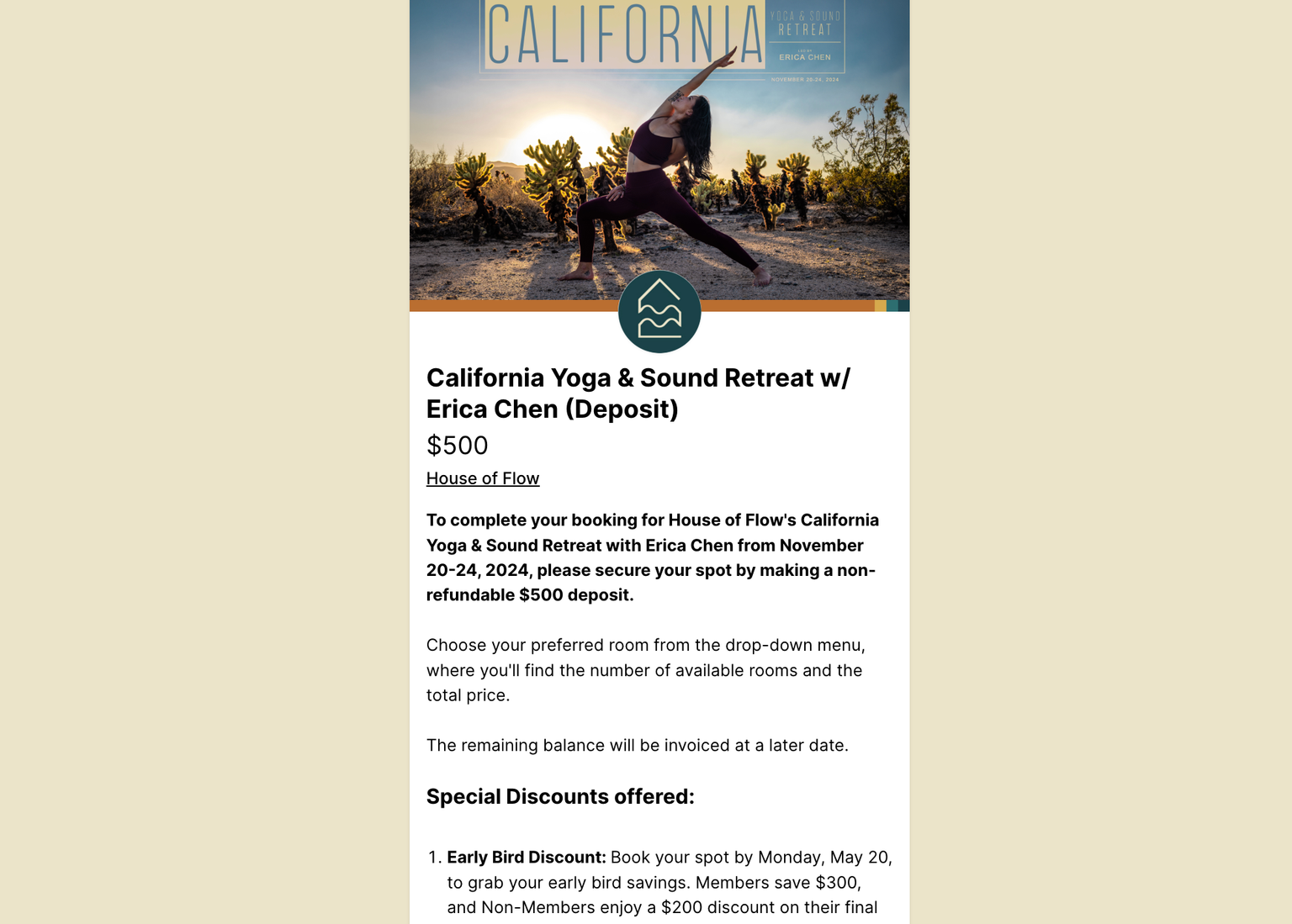
If you'd like to start immediately and create your retreat checkout page in minutes, using our template will make it a breeze.
Let’s look at how simple it is to create a customized no-code checkout page from scratch using our simple and intuitive page builder.
Step 1. Create your event checkout page
Select an 'Event' page, give your event a name, dates range, as well as add a location and the total capacity for your event.

Step 2. Choose your page type
Checkout Page allows you to select different page layouts, as well as either a hosted page option or embed code for a website:

Step 3. Add tickets for your event
Based on the total capacity of your event (15 in this case) add your ticket types making sure they do not exceed the capacity:

Step 4. Add a description to your page
Add a description for your event that will grab peoples attention and give them a flavor of what to expect.

Step 4. Add images to your page
Add an image that works for your branding and retreat theme. Checkout Page enables you to add multiple images:
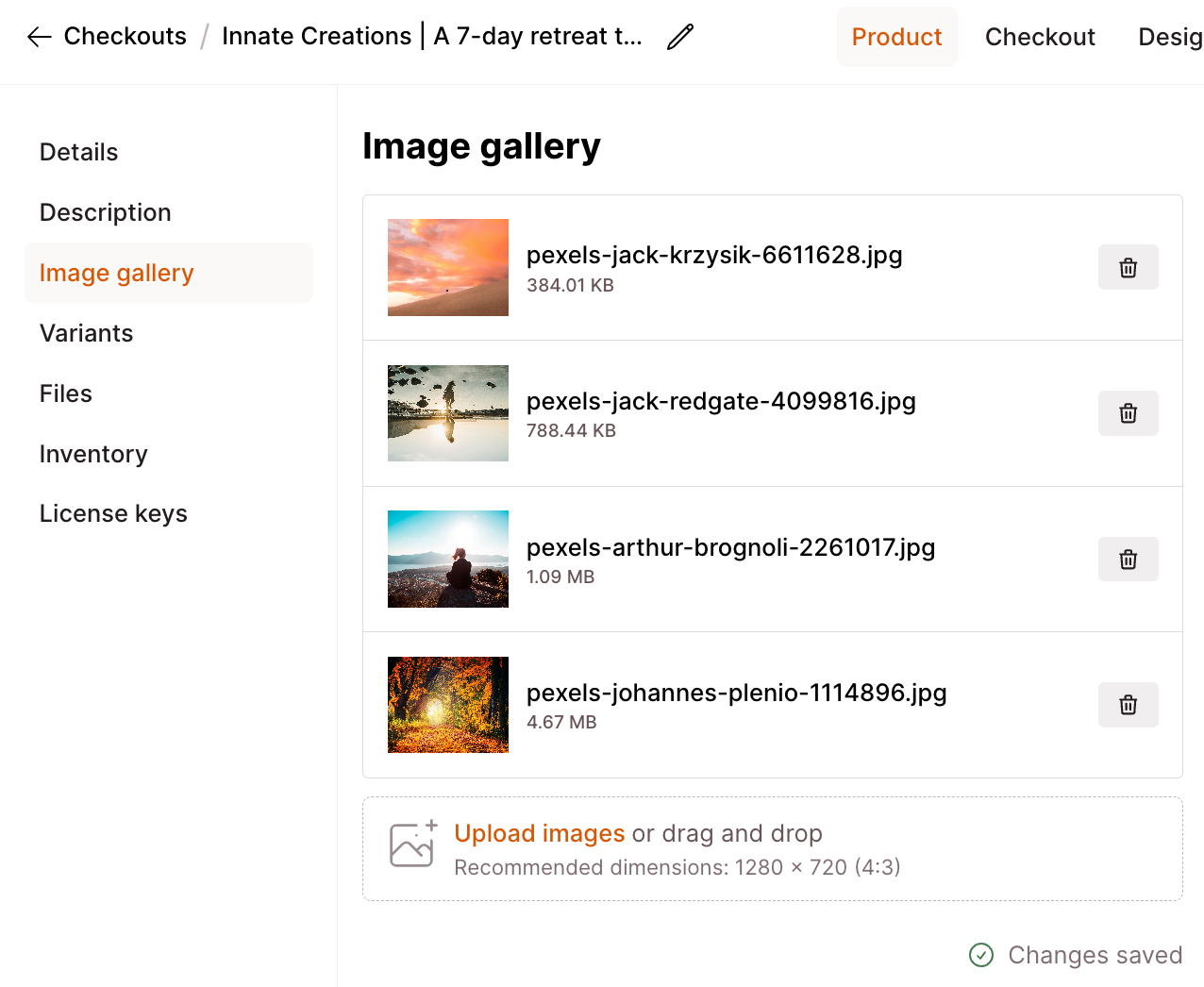
Step 5. Adjust colors to suit your branding
Checkout Page allows you to customize various elements of your page, so that you can tailor it to your brand and set the right tone for your event!

Step 6. Share your page
When you are ready to share your event with the world, you can select from a hosted payment link, embed code for your website and a QR code option too for posters, flyers and more.

Step 7. Preview your page
Checkout Page shows a preview panel the whole way through the creation process. When are you happy with the feel and setup of your page, you are ready to share it with your audience!

Conclusion and final thoughts
While no doubt planning a retreat is a process with many things to consider, both creative and logistical, it can be one of the most enriching ways to engage with your audience - human to human.
We’ve looked at what defines a retreat, why they are becoming more popular than ever, and the benefits and rewards of starting a retreat business.
We’ve looked at the planning stages—from your initial vision to the post-retreat evaluation—and provided a retreat checklist that ensures none of the key planning items will be missed.
We’ve revealed insider tips from a retreat leader and looked at how Checkout Page can help you sell spaces on your retreat by facilitating flexible deposit and payment plan options.
To learn more about setting up retreat payment plans, check out How to Sell Payment Plans with Stripe.
We hope that we can support you on your retreat planning journey.




